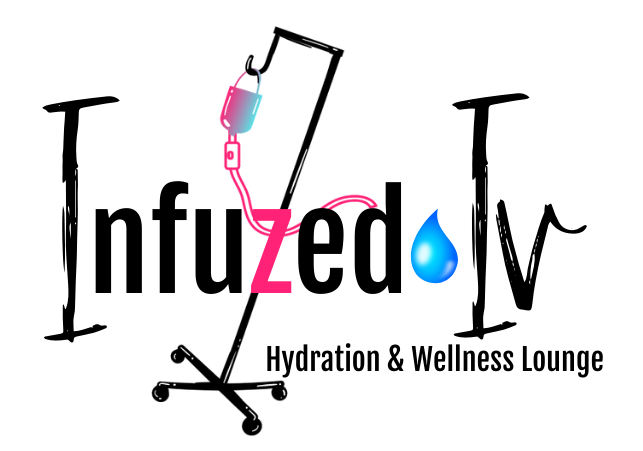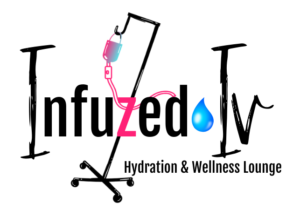Depression is a mood disorder that causes a persistent feeling of sadness and loss of interest. It affects how you feel, think and behave and can lead to a variety of emotional and physical problems and a reduced ability to enjoy life. Research suggests that depression is not simply having too much or too little of certain brain chemicals. Rather, there are many possible causes of depression, including faulty mood regulation by the brain, genetic vulnerability, stressful life events, medications, and medical problems. It’s believed that several of these forces interact to bring on depression. Researchers believe that nerve cell connections, nerve cell growth, and the functioning of nerve circuits have a major impact on depression. The answer may be that mood only improves as nerves grow and form new connections, a process that takes weeks. In fact, animal studies have shown that antidepressants spur the growth and enhance branching of nerve cells in the hippocampus. So, the real value of these medications may be in generating new neurons (a process called neurogenesis), strengthening nerve cell connections, and improving the exchange of information between nerve circuits.
There is a great need for new and effective treatment methods for patients suffering from depression. No single treatment modality has been shown to be particularly effective, and patients are often subjected repeatedly to unsuccessful drug trials. Approximately 30% of patients with major depressive disorder (MDD) episodes are resistant to antidepressant drugs [1]. In these patients, the risk of developing chronic depression (an episode longer than 24 months) is high.
Pulsed electromagnetic frequency (PEMF) therapy has been utilized in the treatment of depression with improvement of depression symptoms.
It has been shown that PEMF stimulation induces intracellular signaling related to tyrosine kinase receptor activity which is known to influence signal pathways controlling cell growth, metabolism, and survival [2,3]. PEMF treatments have shown to increased neurite length and cell body size [4,5]. In addition, both PEMF and selective serotonin reuptake inhibitors (SSRI) medication enhances cellular signaling, and increases mRNA synthesis for growth factors such as brain-derived neurotrophic factor (BDNF) [5,6] and fibroblast growth factor [7]. Results from clinical studies have demonstrated that stress and depression decrease BDNF expression and neurogenesis and that antidepressant treatment reverses or blocks these effects [6]. Clinical studies have demonstrated an association between BDNF levels and several disorders, including depression, epilepsy, bipolar disorder, Parkinson’s disease, and Alzheimer’s disease. These results indicate PEMF might be both an activator of intracellular signaling and an enhancer of the action of antidepressant medication.
The influence of PEMF on cortical excitability has also been investigated. Healthy subjects treated with low-frequency and low-voltage PEMF demonstrated increased cortical excitability, and exposure produces a selective enhancement of glutaminergic neurotransmission in the brain. Because this specific neurotransmitter (brain messenger) is involved in the pathophysiology and treatment of mood disorders, this represents another possible explanation for the antidepressant effect of PEMF [8].
Neuroimaging studies in MDD have consistently shown decreased activity in the dorsolateral prefrontal cortex (DLPFC), an area involved in executive functioning [9-12]. These observations are in line with [18F]-fluorodeoxyglucose (FDG) imaging studies showing lower prefrontal glucose metabolism in MDD [12,13]. Following treatment with the SSRI paroxetine, increases of glucose metabolism were observed
in cortical brain areas previously implicated in MDD, including parts of the prefrontal, parietal, and dorsal anterior cingulate cortex [14]. Importantly, in both preclinical and clinical studies, PEMF also appears capable of increasing glucose metabolism in these areas [15-17]. Moreover, PEMF aimed at the DLPFC of patients suffering from MDD has been shown to both increase cortical excitability and relieve depressive symptoms [10,11].
There is evidence for a low-grade inflammatory process in the pathophysiology of depression. This process could be important in both the onset of depression [18] and its treatment with adjuvant anti- inflammatory drugs [19]. PEMF stimulation targets inflammatory processes by decreasing cytokine levels [20-23].
The antidepressant effects of PEMF are well established. A meta-analysis of 32 studies reported a moderate effect of active PEMF treatment on depression severity, as measured by the 17 item Hamilton Depression Rating Scale (HAMD-17), and the Major Depression Inventory. The overall conclusion was that PEMF is an effective treatment of depression [24-30]. Side effects of PEMF treatment in depression appear to be few and mild. No significant differences were seen between side effects in the active versus the placebo group [28,29].
Summarizing, novel therapies for Depression are highly needed. The evidence collected thus far indicates that intervention with PEMF has an antidepressant effect, possibly involving a restoration of the disrupted brain connectivity. There is also support with respect to the neurogenesis/neuroplasticity and immune hypotheses with beneficial effects of PEMF on neuronal growth and pro-inflammatory cytokines. The most consistent finding is an acute effect of PEMF on local brain activity and glucose metabolism. This is also in line with current ideas that connectivity between different cortical regions is disrupted in depression, and that antidepressant treatment should be targeted at restoring the communication between neuronal networks.
- N. Stimpson, N. Agrawal, G. Lewis. Randomised controlled trials investigating pharmacological and psychological interventions for treatment-refractory depression: Systematic review. Br J Psychiatry, 181 (2002), pp. 284-294.
- U.L. Rahbek, K. Tritsaris, S. Dissing. Interactions of low frequency, pulsed electromagnetic fields with living tissue: Biochemical responses and clinical results. Oral Biosci Med, 2 (2005), pp. 29-40.
- F.M. Uckun, T. Kurosaki, J. Jin, X. Jun, et al. Exposure of B-lineage lymphoid cells to low energy electromagnetic fields stimulates Lyn kinase. J Biol Chem, 270 (1995), pp. 27666-27670.
- Lekhraj R., Cynamon D.E., DeLuca S.E., et al. Pulsed electromagnetic fields potentiate neurite outgrowth in the dopaminergic MN9D cell line. J. Neurosci. Res., 92 (6) (2014), pp. 761-771.
- Li Y., Yan X., Liu J., et al. Pulsed electromagnetic field enhances brain-derived neurotrophic factor expression through L-type voltage- gated calcium channel- and erk-dependent signaling pathways in neonatal rat dorsal root ganglion neurons. Neurochem. Int., 75 (2014), pp. 96-10.
- M.E. Kozisek, D. Middlemas, D.B. Bylund. Brain-derived neurotrophic factor and its receptor tropomyosin-related kinase B in the mechanism of action of antidepressant therapies. Pharmacol Ther, 117 (2008), pp. 30-51.
- S.J. Evans, P.V. Choudary, C.R. Neal, et al. Dysregulation of the fibroblast growth factor system in major depression. Proc Natl Acad Sci U S A, 101 (2004), pp. 15506-155011.
- F. Capone, M. Dileone, P. Profice, et al. Does exposure to extremely low frequency magnetic fields produce functional changes in human brain?. J Neural Transm, 116 (2009), pp. 257-265.
- Drevets W.C. Neuroimaging and neuropathological studies of depression: implications for the cognitive-emotional features of mood disorders. Curr. Opin. Neurobiol., 11 (2) (2001), pp. 240-249.
- Lepping P., SchonfeldtLecuona C., Sambhi R.S., et al. A systematic review of the clinical relevance of repetitive transcranial magnetic stimulation. Acta Psychiatr. Scand., 130 (5) (2014), pp. 326-341.
- Pascual-Leone A., Rubio B., Pallardo F., et al. Rapid-rate transcranial magnetic stimulation of left dorsolateral prefrontal cortex in drug-resistant depression. Lancet, 348 (9022) (1996), pp. 233-237.
- Videbech P. PET measurements of brain glucose metabolism and blood flow in major depressive disorder: a critical review. Acta Psychiatr. Scand., 101 (1) (2000), pp. 11-20.
- Hosokawa T., Momose T., Kasai K. Brain glucose metabolism difference between bipolar and unipolar mood disorders in depressed and euthymic states. Prog. Neuro-Psychopharmacol. Biol. Psychiatry, 33 (2) (2009), pp. 243-250.
- Kennedy S.H., Evans K.R., Kruger S., et al. Changes in regional brain glucose metabolism measured with positron emission tomography after paroxetine treatment of major depression. Am. J. Psychiatry, 158 (6) (2001), pp. 899-905.
- Parthoens J., Verhaeghe J., Wyckhuys T., et al. Small-animal repetitive transcranial magnetic stimulation combined with [(1)(8)F]- FDG microPET to quantify the neuromodulation effect in the rat brain. Neuroscience, 275 (2014), pp. 436-443.
- Cho S.S., Yoon E.J., Bang S.A., et al. Metabolic changes of cerebrum by repetitive transcranial magnetic stimulation over lateral cerebellum: a study with FDG PET. Cerebellum, 11 (3) (2012), pp. 739-748.
- Kimbrell T.A., Dunn R.T., George M.S., et al. Left prefrontal-repetitive transcranial magnetic stimulation (rTMS) and regional cerebral glucose metabolism in normal volunteers. Psychiatry Res., 115 (3) (2002), pp. 101-113.
- Friebe A., Horn M., Schmidt F., et al. Dose-dependent development of depressive symptoms during adjuvant interferon-{alpha} treatment of patients with malignant melanoma. Psychosomatics, 51 (6) (2010), pp. 466-473.
- Kohler O., Benros M.E., Nordentoft M., et al. Effect of anti-inflammatory treatment on depression, depressive symptoms, and adverse effects: a systematic review and meta-analysis of randomized clinical trials. JAMA Psychiatry, 71 (12) (2014), pp. 1381-1391.
- Chang K., Hong-Shong Chang W., Yu Y.H., et al. Pulsed electromagnetic field stimulation of bone marrow cells derived from ovariectomized rats affects osteoclast formation and local factor production. Bioelectromagnetics, 25 (2) (2004), pp. 134-141.
- Gomez-Ochoa I., Gomez-Ochoa P., Gomez-Casal F., et al. Pulsed electromagnetic fields decrease proinflammatory cytokine secretion (IL-1beta and TNF-alpha) on human fibroblast-like cell culture. Rheumatol. Int., 31 (10) (2011), pp. 1283-1289.
- Guo H., Luo Q., Zhang J., et al. Comparing different physical factors on serum TNF-alpha levels, chondrocyte apoptosis, caspase-3 and caspase-8 expression in osteoarthritis of the knee in rabbits. Joint Bone Spine, 78 (6) (2011), pp. 604-610.
- Rasouli J., Lekhraj R., White N.M., et al. Attenuation of interleukin-1beta by pulsed electromagnetic fields after traumatic brain injury. Neurosci. Lett., 519 (1) (2012), pp. 4-8.
- 8. K. Martiny. Pulsed electromagnetic fields (PEMF) in treatment resistant depression. Poster presented at the International Society of Affective Disorders, Second Biennal International Conference, March 4–10, Cancun, Mexico. J Affect Disord, 78 (2004), p. 124.
- 9. P. Bech, N.-A. Rasmussen, L.R. Olsen, et al. The sensitivity and specificity of the major depression inventory, using the Present State Examination as the index of diagnostic validity. J Affect Disord, 66 (2001), pp. 159-164.
- 10. L.G. Bretlau, M. Lunde, L. Lindberg, et al. Repetitive transcranial magnetic stimulation (rTMS) in combination with escitalopram in patients with treatment-resistant major depression: A double-blind, randomised, sham-controlled trial. Pharmacopsychiatry, 41 (2008), pp. 41-47.
- Allan C.L., Herrmann L.L., Ebmeier K.P. Transcranial magnetic stimulation in the management of mood disorders. Neuropsychobiology, 64 (3) (2011), pp. 163-169.
- Martiny K., Lunde M., Bech P. Transcranial low voltage pulsed electromagnetic fields in patients with treatment-resistant depression. Biol. Psychiatry, 68 (2) (2010), pp. 163-169.
- Rohan M.L., Yamamoto R.T., Ravichandran C.T., et al. Rapid mood-elevating effects of low field magnetic stimulation in depression. Biol. Psychiatry (2013).
- Straaso B., Lauritzen L., Lunde M.,et al. Dose-remission of pulsating electromagnetic fields as augmentation in therapy-resistant depression: a randomized, double-blind controlled study. Acta Neuropsychiatr., 26 (5) (2014), pp. 272-279.




